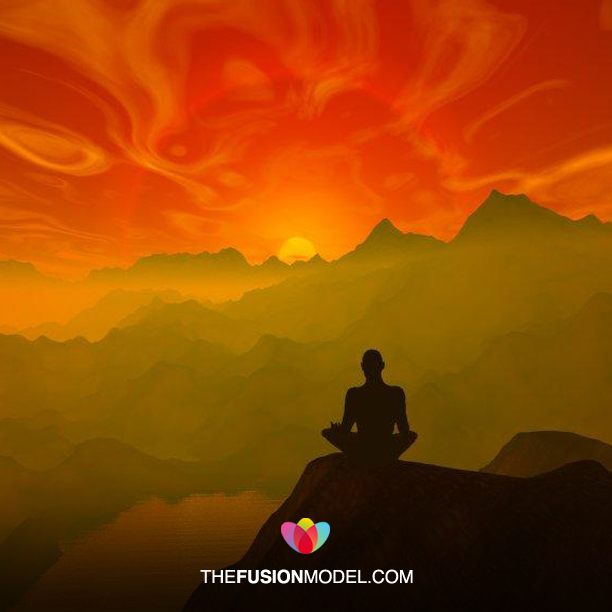I was fortunate enough recently to spend some time in the company of the Venerable Lama Ngedon Drime.
Lama Drime, or Saddhu as he likes to be called, describes himself as a ‘kick-ass monk’. It’s fair to say that, in his teachings, he strips away all the ‘bells and smells’ of popular meditation practice and takes it back to the bare essentials, which boil down to one important feature; you in the presence of your mind.
Saddhu has spent the last 38 years of his life in pursuit of spiritual development through the Buddhist and Zen traditions. When someone has such focus and devotion, their words have gravitational pull. They mean something.
And when they speak, you listen.
.
Don’t just do something, sit there
I thought I knew about meditation, but Saddhu taught me a surprisingly simple exercise based in the yoga nidra tradition which intensely deepens the practice which I found really powerful. Although not designed to help you fall asleep, it certainly would have that effect if you did not consciously set your intention to stay awake.
In fact yoga nidra is often referred to as ‘yogic sleep’ and is a state of consciousness between waking and sleeping; a state I access when guiding my clients in visualisation; a state in which the body is completely relaxed, as the practitioner becomes increasingly aware of their inner world by following a set of simple instructions.
This state of consciousness is different to mindfulness meditation where concentration on a single focus is required. In yoga nidra the practitioner systematically withdraws attention, closing down the senses, apart from hearing, which connects to the heard instructions.
The practice is also called ‘lucid sleep’ and is among the deepest possible states of relaxation while still maintaining full consciousness. Not surprisingly, it has been found to be really helpful in reducing tension and anxiety if practiced regularly.
Nailing jelly to a wall
In the spirit of ‘if every man would mend a man’, I will now pass this meditation technique on to you. You, in turn, may wish to pass it on to others.
People often ask what deep meditation feels like. Like the proverbial jelly you try to nail to the wall, the concept seems ethereal and a bit spooky to many. And when you grasp too hard at the shadows, you begin to lose the substance, because the description can never be the thing itself.
Like mindfulness, it is something you need to experience rather than study. ‘Power of Now’ author, Meister Eckhart Tolle, describes it as ‘settling the mind to awaken the self.’
He says ‘When there is a conscious choice to remove attention from thinking, you dis-identify from your thoughts, and there is a form of awakening. You observe yourself.’
It’s fair to say, it’s an increasingly frenetic world. Research shows that, as a species, we are genuinely speeding up. We breathe faster, talk faster and even walk faster. As an antidote, there is more need now than ever, to be able to step away from ‘doing’ into just ‘being’, to achieve the calm, clarity and peace everyone seems to crave and which some of us pursue in ways that are harmful to the self. If you want to slow down, yoga nidra can really help.
Yoga nidra: the practice
This exercise is best practised sitting in an upright chair such as a dining chair, with palms placed downwards on your knees. It is best not to do this practice lying down as it is so relaxing, you really do tend to fall asleep.
To avoid nodding off, right at the start it’s useful to repeat the resolution three times ‘I am practising yoga nidra. I am fully awake.’
Begin
You begin by becoming aware of your body sitting in the chair; notice where contact is made between your body and the chair; the seat, upper legs, the feet on the floor, the hands on the knees. Scan throughout the body.
Now you begin to imagine yourself breathing in and out through various body parts. One in and out breathe per body part, moving steadily around the body.
Breathe in and out through:
The thumb of the right hand, the forefinger of the right-hand, the middle finger, ring finger and little finger of the right-hand.
The right forearm, the right elbow, the right upper arm, the right shoulder, the right side of the chest, the right side of the abdomen, the right side of the hips, the right upper back, the right knee, the right lower leg.
Breathe in and out through the right big toe, the right second toe, third toe, fourth toe and little toe; the whole right foot.
Now repeat for the left-hand side of the body beginning with the thumb of the left-hand and throughout as before.
Then focus on the lower spine, the mid spine and upper spine.
Breathe in and out through the right nostril, left nostril, right ear, left ear, right eye, left eye, crown of the head.
Repeat to yourself, as and when necessary, ‘I am practising yoga nidra and I am fully awake.’
To finish the practice, clench your fists and extend your fingers forward three times. Stretch your legs out, clench and release the toes three times and fully open your eyes.




